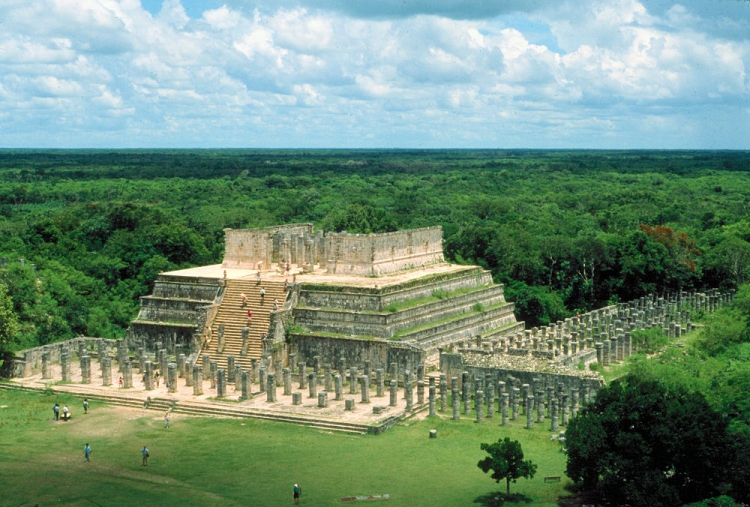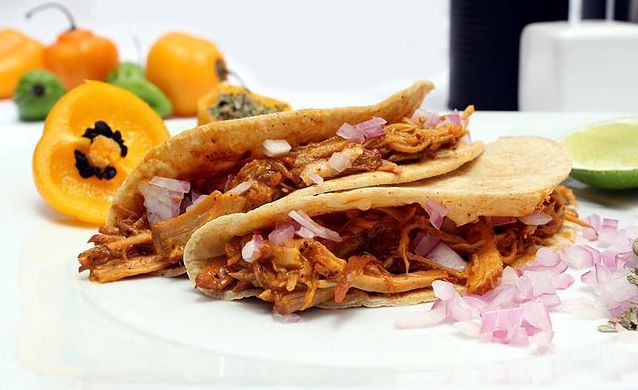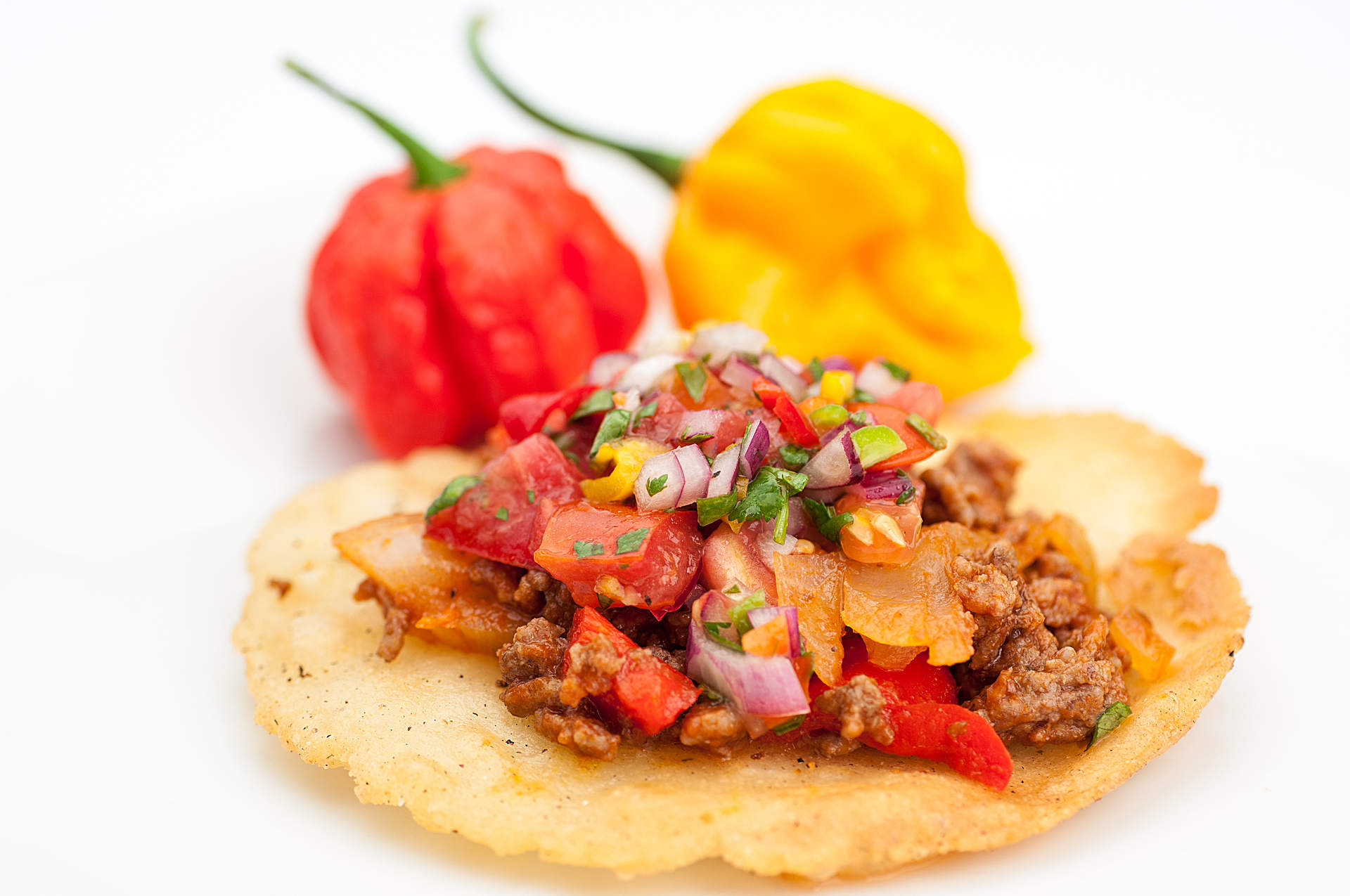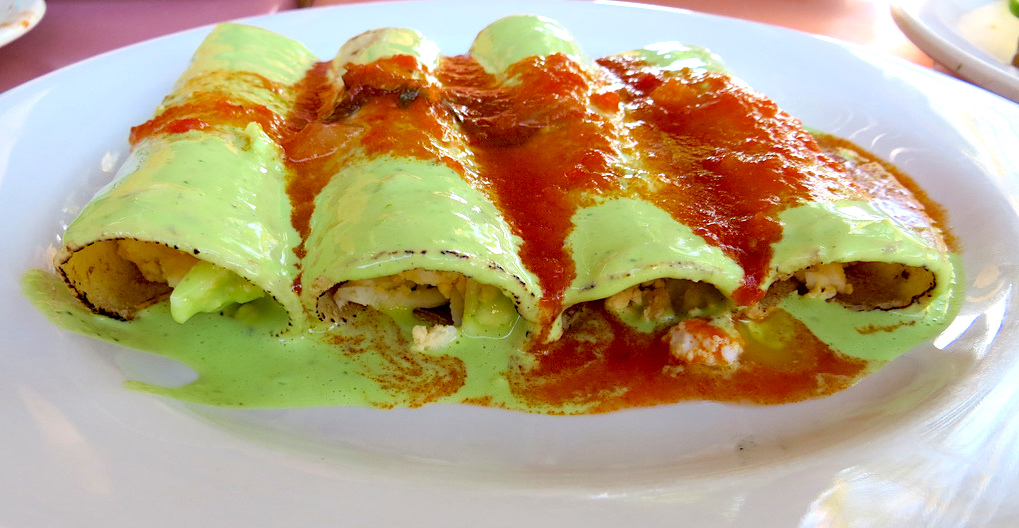Mayan Dishes by the Pyramids

The city of Chichén Itza is the home of the largest and most famous ancient Mayan ruin. Located just one hour outside of Mérida, Mexico—it is one of the most visited archeological sites in Mexico. This incredibly trying process of building these immense structures not only make you thirsty, but also hungry. After spending a day in Chichén Itza, you have the opportunity to try various restaurants and you will realize that the Mayans were not only famous for their architecture and astrology, but for their culinary traditions too.
Image credit: Blogspot/Comunidad MayaMayan, or Yucatecan food traditions and recipes have been passed down from generation to generation. The dishes vary from pork, chicken or meat and vary from mild to very, very spicy. Tortillas are used as a base for a lot of Mayan dishes, but certainly aren't the most important part of the meal. Think of the tortilla as the easel and all the ingredients as the paint: the tortilla is something that is built upon. In my opinion, the best three Mayan dishes are Cochinita Pibil, Panuchos and Papadzules.
Cochinita Pibíl
Spiciness Scale: 1/7 (With Habanero: 6/7)
Cochinita Pibil is a Mexican twist on pulled pork. First, pork is marinated overnight in axiote and then placed inside toasted banana leaves. It's then cooked and then served in tortillas. To top it off, you can chose to smother it with one of the many homemade salsa. Or, you can drizzle a melody of red onion and habanero pepper drenched in vinegar. If not served with the onions and habaneros, I would give this a mild rating on the spiciness scale, but if served with them, I would give it a tongue numbing and quite excruciating 6/7. Even though the Mayans did not have access to the technology we have today, the use of corn and banana leaf relates back closely to how they were accustomed to cook.
The ancient Mayans did not necessarily have access to domesticated animals such as pork and cows, but they did have things such as wild boars and chickens, which serves as evidence of how closely we can relate the dishes of today's Mayan/Yucatecan food, and link them to their traditions. This only makes me want to emphasize more the importance of mixing your visit with the food offered inside of Chichén.
Image credit: Wikipedia Commons/Canibalazzo
Panuchos
Spiciness Scale: 0/7 (With Habanero: 5/7)
Panuchos are created using a variety of ingredients as well, but are a pretty simple yet delicious dish. A tortilla is fried in boiling oil, opened and stuffed with either frijoles bayos (beans) or hard boiled egg mixed with the frijoles bayos. After the stuffing is done, the only thing left to do is putting on either Cochinita Pibíl or chicken on a base of lettuce, adding purple onion and either salsa or lime as well as avocado. The habanero, red onion and vinegar mixture optional, but I strongly recommend trying it because really brings out the flavor.
If eaten without salsa or condiment, it is extremely mild, but if eaten with salsa and the onion concoction, beware. In contrast to the Cochinita PibÍl, the method does not relate to the Mayans; but the ingredients do. Beans, tortillas and avocado were central ingredients in the Mayan's diet. Pair this dish with a cold Michelada (beer with lime juice and rim coated in salt), this makes an ethereal combination, transporting you back to the times of the ancient civilization of Itza.
Image credit: Recetas MexicanasPapadzules
Spiciness Scale: 4/7
This dish has not one - hold on to your hats ladies and gentlemen, but two sauces. One is a green sauce made of pumpkin pips and Mexican worm seed (disclaimer: it does not contain any worms, it's an herb) and the other is a tomato and onion based sauce boiled with two habanero peppers. Once the sauces are prepared, the Papadzul is made by filling a tortilla with hard-boiled egg, which is then rolled and then smothered with the green sauce. The red sauce is left on the side and served as you please.
This traditional Yucatan dish has an incredibly soft and creamy flavor that envelops your taste buds. Spicy, yet velvety and soft with a dash of salty, this dish never fails to impress. Generally speaking, this plate stands in between mild and spicy and not trying Papadzules whilst seated in front of one of the Wonders of the World, in my sincere opinion, would be blasphemous towards Mexican dinning culture.
Image Credit: Image Image Credit: Flickr/Joel AbroadAlas, Mexico has a wide variety of traditional food to offer the world. But tasting one or all of these delectable dishes in the cradle of civilization, indeed has its perks. It's important for people visiting Mexico to understand that it's not only about eating tacos or wearing sombreros and ponchos. Mexico has an extremely rich past and a very cultured and mesmerizing present.




